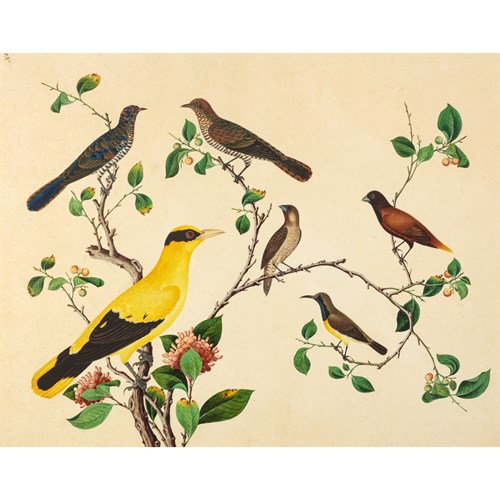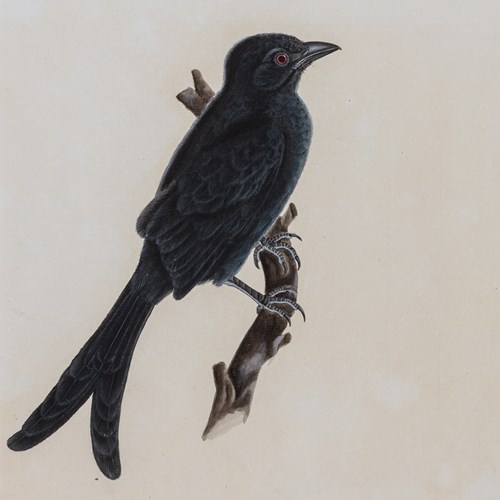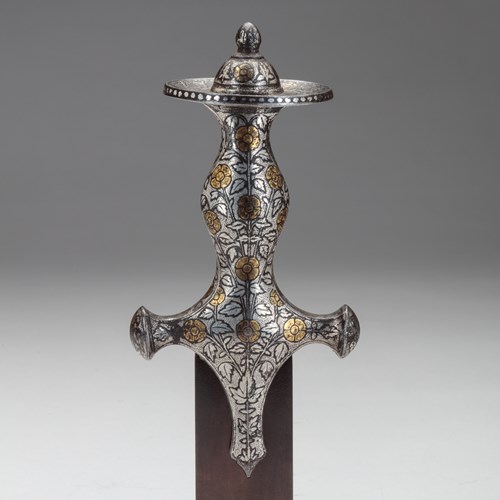Marketplace
A SILVER-MOUNTED CASKET
This Dutch-colonial box sits atop four rounded feet. It has two inner compartments with removeable lids, suggesting that it was a betel box. Betel boxes are typically small caskets, around 20cm in length, with silver or gold handles on their shorter lengths.1 The smaller compartments were designed to hold a pot of slaked lime and a round container holding the rolled up betel leaves. The large compartment would have held the requisite tools, such as cutters.2 Whilst Dutchmen smoked tobacco, chewing betel was seen as the reserve of Dutch women. A watercolour by Jan Brandes, now in the Rijksmuseum (accession no. NG-1985-7-2-15) shows a Dutch woman taking tea and betel. Her female slave sits on the ground holding a betel box.
The casket is carved with curling foliate tendrils terminating in flowers, a motif typical of the Sri Lankan port town of Galle. Examples of two caskets originating from Galle in 1800 are illustrated on page 32 of Asian Art and Dutch Taste, and a chair from Galle held in the Peabody Essex Museum is illustrated on page 378 of Furniture from British India and Ceylon.3 The box is mounted with floral silver fittings at the corners and around the lock, which contrast with the ebony of the body.
1 Veenendaal, Jan. Asian Art and Dutch Taste. The Hague: Waander Uitgevers, 2014. P. 120.
2 Ibid. P. 120.
3 See Veenendaal, Jan. Op. Cit. Figs 37 and 38, p. 32; Jaffer, Amin, and Karina Corrigan. Furniture from British India and Ceylon : A Catalogue of the Collections in the Victoria and Albert Museum and the Peabody Essex Museum. London: V&A Publications, 2001. Fig. 186, p. 378.
The casket is carved with curling foliate tendrils terminating in flowers, a motif typical of the Sri Lankan port town of Galle. Examples of two caskets originating from Galle in 1800 are illustrated on page 32 of Asian Art and Dutch Taste, and a chair from Galle held in the Peabody Essex Museum is illustrated on page 378 of Furniture from British India and Ceylon.3 The box is mounted with floral silver fittings at the corners and around the lock, which contrast with the ebony of the body.
1 Veenendaal, Jan. Asian Art and Dutch Taste. The Hague: Waander Uitgevers, 2014. P. 120.
2 Ibid. P. 120.
3 See Veenendaal, Jan. Op. Cit. Figs 37 and 38, p. 32; Jaffer, Amin, and Karina Corrigan. Furniture from British India and Ceylon : A Catalogue of the Collections in the Victoria and Albert Museum and the Peabody Essex Museum. London: V&A Publications, 2001. Fig. 186, p. 378.
Plus d'œuvres d'art de la Galerie









